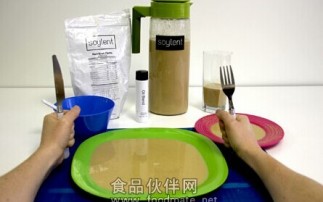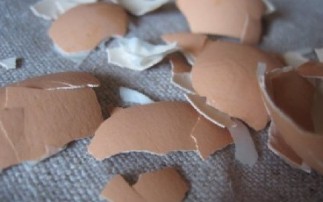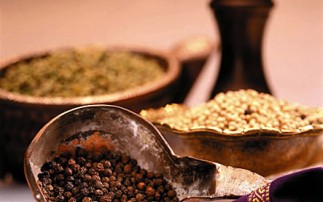french cuisine is extremely diverse, with only the chinese having similar variety in their food. this variety is supported by the french passion for good food in all its forms, france's extraordinary range of different geographies and climates which support the local production of all types of ingredients, and france's long and varied history. in many ways, an understanding of the culture of french food is an understanding of france itself.
meals range from the very basic, such as the traditional baguette plus cheese plus inexpensive wine, to very elaborate affairs that can involve a dozen courses and different wines consumed over several hours. obviously, the latter type of dining is exceptional for most people. however, it is this more sophisticated dining which is typically found in "french restaurants" outside france, giving many foreigners the mistaken impression that french food is heavy and complicated. in fact, much of the french cuisine is fairly simple, relying on high quality fresh ingredients and loving preparation rather than complex recipes.
it is common in much of france to take a two hour break for lunch, with many working parents (particularly in villages and smaller towns) returning home for lunch. in some areas, mainly in the south of france, even longer lunch breaks are taken. due to the long lunch break, businesses which close for this period typically reopen around 2pm or so and then stay open until about 7pm.
regional influences on french food
almost all the famous french dishes are regional specialities, some of which have become popular throughout france (such as coq au vin and foie gras) while others are mainly enjoyed in the regions in which they originate. although regional specialities are often offered throughout france, the quality of ingredients and preparation is often superior in their region of origin.
each region, in addition to boasting local specialities, also has a general style of cooking and choice of ingredients. for example, in provence the food typically features olive oil, herbs and tomatoes. the evolution of regional cooking styles has been influenced by:
local availability
the french, a nation of gourmets, know that the best food is made from local ingredients, which are fresher and of better quality than items which have been transported long distances. consequently, coastal regions (such as brittany and normandy, on the northwest coast of france) will favour sea fish and will use it more often and in more varied ways than inland areas. likewise, areas where fruit or herbs grow easily, will incorporate these into their local cuisine.
neighbouring countries and immigration
areas of france which border on other countries have incorporated some of the cuisine of their neighbours. it is not surprising to find italian dishes near the italian border. more notably, the french region of alsace is similar to germany in its food (sauerkraut is popular) and wine, partly due to it currently bordering on germany and partly due to it having been part of germany at various points in its history (the border has moved back and forth with various wars). in parts of the south which have a large north african immigrant population one can enjoy the cuisine which they have imported from their original countries.
history and economic conditions
the culture, lifestyle and economic conditions over a long period of time have formed the development of local food traditions. the rich meat dishes and cream sauces of burgundy are not only due to burgundian excellence in raising cattle, but in large part to the economic prosperity of this region over several centuries. on the other hand, mountain regions excel in firm cheeses, which allow food to be preserved over the long and difficult winters, and can be produced from mountain livestock which historically were the main means of support for many families in economically limited areas.
in all parts of france one will find a range of dishes, both in restaurants and in homes, which extends far beyond the regional specialities. however, in much of france the regional influences in terms of ingredients and cooking are marked. the most available food and the best cooking tend to be those produced from local ingredients and using local recipes. therefore, the decision of where to visit or live in france tends to influence which types of food one will enjoy.
the french mediterranean uses olive oil, herbs and tomatoes in many of its dishes. the cuisine of northwest france uses butter, soured cream (crème fraiche) and apples. the cuisine of northeast france (alsace, and to a lesser extent lorraine) has a strong german influence which includes beer and sauerkraut. throughout the south in general there tends to be more use of vegetables and fruit (in part due to the favourable climate). near the atlantic coast and the mediterranean there is a greater consumption of sea food, while inland areas favoured by rivers (e.g. the loire valley) use more fresh water fish.
the italian connection
any discussion of the influences on french cuisine would be incomplete without recognising the historical contribution of italy to the development of french cooking. in 1533, catherine de medicis (a florentine princess) married henry duc d'orleans (who became king henry ii or france). at this point, france was not know for its food or food culture. catherine brought an entourage of italian chefs with her to france, who introduced to france a variety of dishes, food preparation and dining practices. although france and italy obviously have evolved very different food cultures, both before and since this contribution, much of france's current food culture can be traced back to this time.
cooking styles
every region of france has its own distinctive traditions in terms of ingredients and preparation (see france regions for further information). on top of this, there are three general approaches which compete with each other:
classical french cuisine (also known in france as cuisine bourgeoise).
this includes all the classical french dishes which were at one time regional, but are no longer specifically regional. food is rich and filling, with many dishes using cream-based sauces.
haute cuisine
it is classical french cuisine taken to its most sophisticated and extreme. food is elegant, elaborate and generally rich. meals tend to be heavy, especially due to the use of cream and either large portions or many smaller portions. there is a strong emphasis on presentation (in particular, vegetables tend to be cut with compulsive precision and uniformity). the finest ingredients are used, and the meal is correspondingly expensive.
cuisine nouvelle.
this style developed in the 1970s, as a reaction against the classical school of cooking. the food is simpler and lighter. portions are smaller and less rich; the heavy cream sauces of the classical approach are particularly avoided. cooking is less elaborate and quicker, with more emphasis on local and seasonal ingredients.
cuisine du terroir.
this focuses on regional specialities and is somewhat more rustic in nature. local produce and food traditions are the main focus.
each of these three traditions are strongly represented in france, with each having its supporters and specialist restaurants. at the moment, cuisine nouvelle is less popular than it was, while cuisine du terroir has grown in popularity in recent years.
wine and cheese
aside from bread and water, the most common accompaniments to a french meal are wine and cheese. unlike other countries, in france wine is considered a standard part of everyday meals, and is neither expensive nor reserved for special occasions. with everyday meals, ordinary wines are served, although it is expected that the style of wine match the style of food.
in addition to its use in cooking, cheese is often served as a course in itself. in this case, it is served after the main meal but before dessert. this typically consists of a platter with three or four different cheeses, from which guests can slice pieces according to their preferences. sliced bread (e.g. slices of a baguette) are typically provided at the same time.
restaurant guides
the most famous and successful restaurant guide in france is the michelin guide rouge, which has approximately 50% market share. it has enormous influence; the award of a single star by the guide rouge to a restaurant can add 25% to its turnover and the loss of a star can mean financial ruin for a restaurant.
the guide rouge is both a restaurant guide and a hotel guide, although its better known for the former. for the towns in the guide rouge there is a list of the main tourist attractions and for the larger towns there is a map. in addition to having one in the house it is handy to have one in the car (e.g. if you are unexpectedly delayed on a journey and need to find a good local restaurant).
although the guide rouge does not provide exact details on the criteria they use for rating restaurants, there are a number of factors beside the quality of food: service, atmosphere and value are some of the other considerations. this perhaps explains our experience that not all restaurants with the same overall rating have the same quality of food, one restaurant may have tremendous atmosphere and average food while another with the same rating may have exceptional food but little atmosphere. the guide rouge sometimes makes a few comments under a recommended restaurant; these are worth reading as they give an indication of what aspect of the restaurant impressed the reviewer. the comments sometimes note specialities of the house, which are often the best items on the menu.
参考译文:
法国的美食是非常多样的,只有中国有与之匹敌的食品种类。这些品种依附于法国人对所有形式美食的强烈爱好。法国不寻常的各种不同地理和气候条件,支撑着当地所有类型原料的生产和法国悠久多样化的历史。在许多方面上,对法国饮食文化的了解即是对法国自身的了解。
进餐类型可从最基本的如传统面包加奶酪加上低廉的葡萄酒,一直延伸到花费几个小时包括十几道菜和各种葡萄酒的复杂进餐。显然,后者餐饮类型对大多数人来说是少见的。不过,这是一种非常复杂的进餐,在法国以外的“法国餐厅”都能找到它。这种餐饮给许多外国人错误印象认为法国食品是浓重和复杂的。在事实上,大部分的法国烹饪是相当简单,它依靠高质量的新鲜食品材料和爱好制作成而不是靠复杂的食谱。
许多法国人花一两个小时吃午餐是很普遍的,许多外出工作的父母(尤其是在乡村和小城镇)都会回家吃午饭。在一些地区,主要集中在法国南部,甚至要花更长的午餐休息时间。由于长时间的午餐休息,这期间企业停业直到下午二点左右重开直到晚上七点左右停业。
区域对法国食品的影响
几乎所有著名的法国菜肴是区域特产,其中一些在整个法国流行(如红酒烩鸡和鹅肝),另一些则主要是在它们原产地受欢迎。尽管整个法国都能提供地区特产,但往往原产地的原料质量和制作更好。
每个区域,除吹嘘当地特产外,都会有特色的烹饪风格和原料选择。例如,普罗旺斯食物通常的特点是橄榄油,草药和西红柿。区域烹调方式演变主要受以下因素影响:
本地供货
法国是一个美食民族,它知道最好的食物是由本地原料制成的,因为它们要比那些经过长距离运输的材料有着更好的新鲜度和质量。因此,海岸地区(如布列塔尼和诺曼底,在法国西北海岸)就要比内陆地区更偏爱咸水鱼,食用次数及加工方法也会比内陆地区更多些。同样,容易生长水果或草药的地区,人们将会把它们纳入到当地的日常饮食中去。
邻国和移民
与其他国家边境相接的法国地区,把一些邻国的菜谱并入到当地菜谱中,在意大利边境地区找到意大利菜是不足为奇的。更值得注意的是,法国阿尔萨斯地区其食品(酸菜很受欢迎)和葡萄酒类似于德国,一部分原因是它目前接壤德国,一部分原因是在历史上争议它一直是德国的一部分(在战争中来回移动)。在南部地区有大量的北非移民喜欢从他们原来国家带来的菜谱。
历史和经济条件
长时间的文化、生活方式和经济条件形成发展了当地的饮食传统。丰富的肉类菜肴,勃艮第的奶油酱汁不仅归因于勃艮第养牛的卓越,大部份还归因于该地区几个世纪以来经济的繁荣。在另一方面,山区有利于制作坚硬的奶酪,这些奶酪能让食物保存较长时间和度过艰难的冬天,这些奶酪能用山区牲畜做成,在历史上这些牲畜是经济有限区域大多数家庭的主要谋生手段。
在整个法国,你会发现一系列的菜肴,不论是在餐馆和在家庭,远远超出了区域特产的范围。然而,大部分法国地区的原料及烹饪都有着自己显著的特色。最受用食品和最佳烹调术往往是那些利用当地原料和烹饪技法做成的。因此,决定在法国何处参观或居住,往往会影响到人们将享用哪些种类的食物。
法国地中海地区在其许多的菜谱中使用橄榄油,草药和西红柿。法国西北地区菜谱中使用黄油,酸奶油和苹果,法国东北菜谱(阿尔萨斯,洛林较小范围内)受到德国很强的影响,这包括啤酒和酸菜。在整个南部地区,一般往往会更多地利用蔬菜和水果(部分归因于有利的气候)。大西洋海岸附近和地中海地区对海鲜食品有很大的消耗量,而靠近河流的内陆地区(如卢瓦尔河谷)则更多食用淡水鱼。
与意大利的联系
任何关于法国烹饪所受影响的讨论若没有涉及意大利对法国烹饪发展的历史贡献都将是不完整的。1533年,凯瑟琳梅第奇(佛罗伦萨的公主) 与奥尔良亨利公爵结婚(后成为国王亨利二世) 此时,法国的食品和饮食文化还不为人知。凯瑟琳随行带来的一位意大利厨师给法国引进了各种菜肴、食品制备及用餐方法。尽管在这一贡献前后所有时间里,法国和意大利明显地演变成了非常不同的饮食文化,但法国目前很多饮食文化皆可追溯到这个时期。
烹调方式
法国每一个地区在配料和制作方面都有自己独特的传统,其中,有3个互相竞争的通用方法:
classical french cuisine (在法国也称作cuisine bourgeoise)
这包括所有的古典法式菜肴,这些菜肴曾经具有地区性,但现在已不再具有具体区域性。食品味道浓厚且充满馅料,许多菜肴都会使用奶基酱汁。
haute cuisine
haute cuisine算是法国古典中最复杂和极端的了。高雅、精致而且通常有着浓厚的味道。餐食味道往往很重,主要是由于奶油的使用及大体积或体积稍小但数量较多的配份。其特别注重外观(尤其是蔬菜,都要进行精确均匀地削减)。由于使用了最好的原材料,因此其相应的价格也很昂贵。
cuisine nouvelle
这种风格在20世纪70年代发展起来,作为对古典的烹饪学派的改革。这种食品比较简单和清淡。其配份较小,味道也不是很重; 特别避免了古典方法中浓重的奶油酱汁的使用。这种烹饪没那么精细,所以比较快捷,其更侧重于本地及季节性原材料。
cuisine du terroir
它侧重于区域特色,且做工有些粗糙,本地产品和食品传统是其重点。
在法国,这三种传统美食中的每一种都具有很强的代表性,并有各自的支持者和专门餐厅。目前,cuisine nouvelle没有以前那么流行,而cuisine du terroir近来快速增长。
葡萄酒与干酪
除了面包和水,法国佐餐最常见的搭配物是葡萄酒和奶酪。与其他国家不同,在法国,葡萄酒被认为是每天佐餐基本的一部分,它既不昂贵,也不会留作一些特别场合。虽然期望葡萄酒的风格会与食品的风格相匹配,但日常膳食都会食用普通葡萄酒。
除可用于烹饪外,奶酪本身也经常作为一道菜。在这种情况下,它是在主食之前而甜心之后吃的。它通常是由一个盛有三个或四个不同奶酪的盘组成,客人可以根据他们的喜好切成小片。与此同时,还会提供切片面包(如长棒面包切片)。
餐馆指南
在法国最有名的和最成功的餐馆指南是米其林胭脂指南,拥有大约50%的市场份额。它有巨大的影响力;胭脂指南每争取到一位明星到餐厅就可以增加25%的营业额,损失一位明星对餐厅来说意味着财政损失。
胭脂指南既是餐厅指南也是酒店指南,虽然其是以前者出名。对于小城镇,胭脂指南有主要旅游景点的清单,较大的城镇会有一个地图。除了在家里放一本,随身携带一本在车上也将会很便利(例如,如果你因为一些非预期的意外而耽误了旅程并需要找一个较好的当地餐厅)。
虽然指南胭脂并没有提供他们划分餐厅等级所使用标准的具体内容,但除食品质量外还有着许多因素:服务,气氛,价值是一些其他会考虑的因素。这也给我们的经验常识给出了解释:并非所有有着相同等级的餐厅都有相同的食品质量,一个餐厅可能会有强大的环境氛围和很一般的食物,而另一家相同等级的餐厅则可能会有较好的食物但却很一般的环境氛围。指南胭脂有时会在所推荐餐厅下面给出一些评论;这些都是值得一读的,因为它们给出了一个餐厅哪方面给评论家留下了深刻印象的指示。评论有时会备注餐厅的特色,这往往都是目录上最好的条目。
相关阅读:




